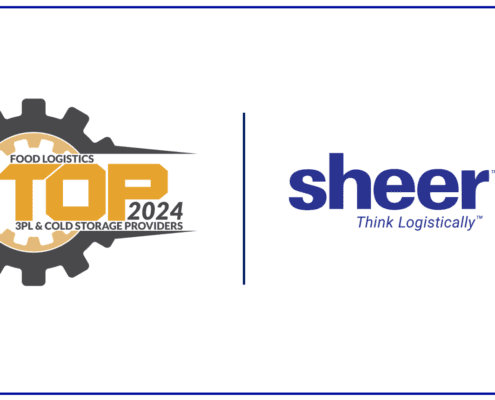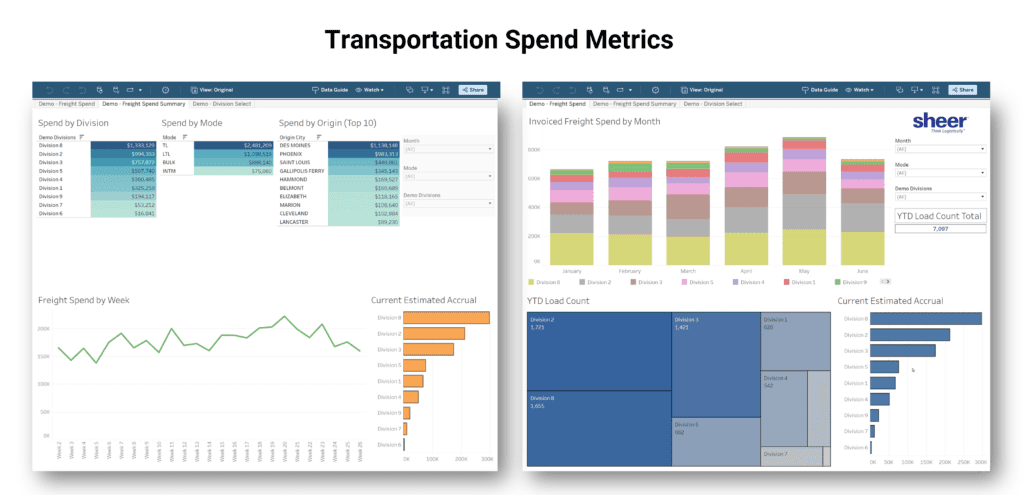
The State of Predictive Analytics in the Logistics Industry
Any company that produces and ships can benefit from predictive analytics. From getting products to consumers faster to providing real-time information, modern tools are how businesses are working through higher shipping costs, supply chain risk management and other logistics issues. Here are ways that technology and data analytics can improve operations.
Optimizing Warehousing Costs
Unless you produce and ship a single product, not everything you sell will have an identical sell cycle. Understanding the sales data for of each of your products gives you the opportunity to optimize your warehouse and know how much it costs to store products. High-demand products will be ordered frequently and should be stored in a place that is easy to reach. On the other hand, products that will be less popular (for example, products with high seasonality) in the upcoming period will not be ordered a lot and can be placed in the back of your warehouse. Also, understanding the current and future demand for each product allows you to manage your inventory well. This prevents over- or understocking. These kinds of subtle inventory management changes have a huge impact over time.
Understanding Your Customers
Not all customers are created equal either. Knowing the differences and preferences of your customer base gives you more time to optimize how you deliver products to them. A customer relationship management platform (CRM) or Transportation Management System (TMS) that records customer data allows you to make better decisions about outsourcing orders to other parties. Having an accurate view of the resources you require in the near future also allows you to make better human resource schedules. If peaks in your workload are known beforehand, you can choose to have fewer people on standby. This reduces your personnel costs and provides your employees with a more predictable work environment.
Improving Visibility
Modern tools, including the Internet of Things (IoT) and visual, real-time shipping trackers, empower shipping managers with enhanced supply chain visibility, allowing them to respond to changing market trends and conditions, supply chain bottlenecks and customer needs more quickly. Route optimization allows logistics and supply chain managers the ability to reduce lead times, lower fuel and driver costs through shorter trips.
Enhancing Forecasting
Using predictive analytics and forecasting models, anyone can prepare weeks or even months in advance to plan inventory and shipments based on customer behavior and demand. This ensures less waste and more on-time deliveries. By using predictive solutions to generate supply and demand forecasts, companies will be able to make the right operational decisions in a proactive manner. This approach can also allow for the rebalancing of assets across any logistic network at a minimal cost.
Quantitative vs. Qualitative Forecasting Methods
There are two types of predictive models used in supply chain forecasting methods, and both types provide valuable insight into how a supply chain functions—or doesn’t.
Quantitative forecasting is based on the assumption that the future will largely mimic the past. It involves the use of formulas to calculate a predetermined forecasting measurement and produces metrics that can be held up against corresponding numbers to indicate current and future trends. For example, a logistics firm might use regression analysis to understand the relationship between fuel prices and transportation costs, allowing the company to better predict transportation costs based on fuel price forecasts.
Qualitative forecasting data is often used for new product lines or when a business first launches because historical data sources are not available . Common types of qualitative data include surveys and interviews, industry benchmarks, competitive analyses, and other descriptive data that tell a story. For example, a company may work with a logistics and supply chain consultant to conduct scenario planning with the goal of developing contingency plans for a variety of potential disruptions ranging from cyberattacks to natural disasters to geopolitical instability.
The Impact of Predictive Analytics on Supply Chain Success
Predictive analytics models can have a positive, even transformative, impact on your supply chain. Here are a few ways supply chain predictive analytics can help you mitigate risk, enhance efficiency, reduce costs and improve customer satisfaction.
- Demand planning and forecasting driven by predictive analytics is more accurate, helping to reduce the risk of stockouts and overstocks
- Optimizing inventory levels reduces carrying costs and improves cash flow
- Route and mode optimization reduces transit times, fuel consumption, greenhouse gas emissions (GHG) and transportation costs
- Predictive maintenance through advanced analytics helps mitigate the disruption caused by breakdowns and reduces downtime
- Sustainability goals are more achievable through a data-driven approach that optimizes fuel consumption and reduces mileage
- Strategic planning and decision-making, such as expanding existing product lines, entering new markets, or making significant technology investments is empowered by predictive analytics
Sheer Provides Instant Access to Information and Insights
The challenges of forecasting in supply chain management are many, but fortunately, there are supply chain professionials like Sheer that can use a predictive analytics solution to your advantage. We’re the perfect partner for businesses that want to make the most of their data and build a flexible, resilient, predictive supply chain. Our transportation management solutions double as analytical tools that allow our clients to better manage their supply chain processes, regardless of how complicated or distant they are. Our solutions go way beyond traditional fulfillment services.
Through logical, insightful, and easy-to-use reporting from accurate data, you can make data-driven decisions, expand logically, and accomplish important business goals. We deliver the big data and business intelligence solutions you need to make better informed strategic decisions.








